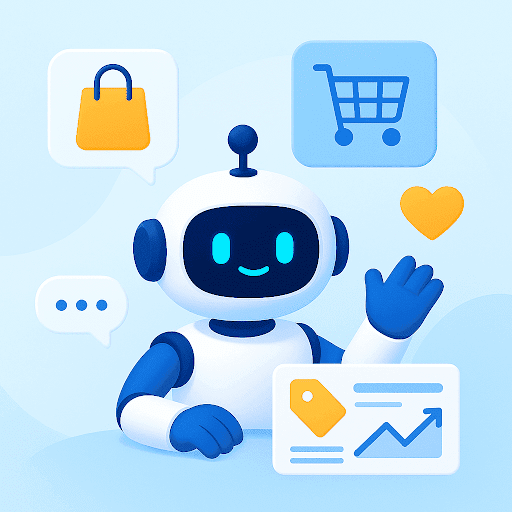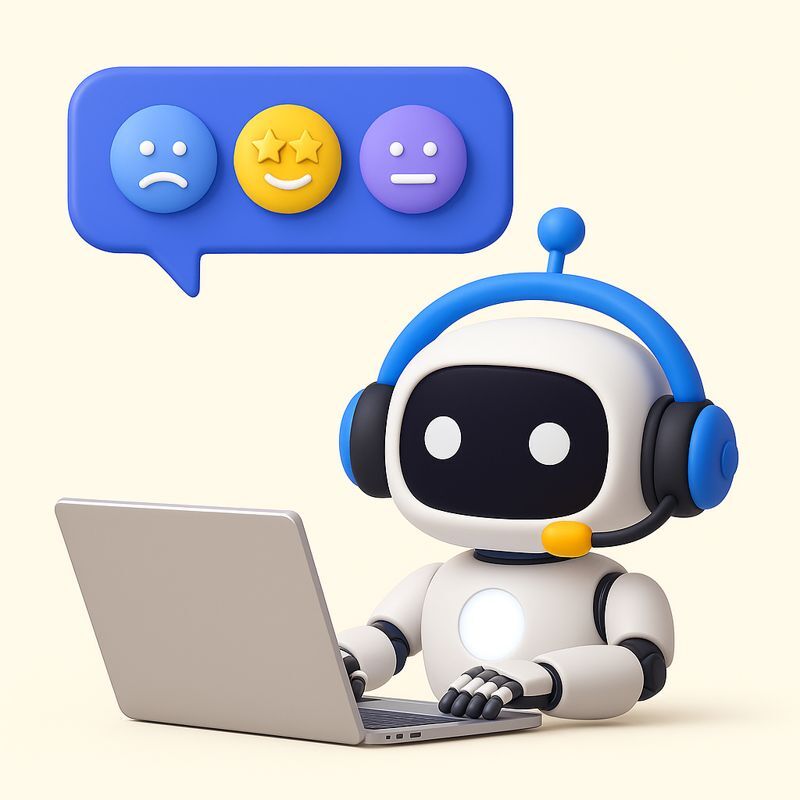Imagine a world where every business could offer help 24/7. That’s the dream, right? While it’s not always possible for real people to be available day and night, chatbots step in to fill that gap in customer service. That’s how businesses can make round-the-clock support a reality.
Dive into this guide to discover what chatbots are, how they function, and some smart ways to build them effectively.
Table of Contents
- Key Takeaways
- What is a Chatbot?
- How Do Chatbots Work?
- Benefits of Using Chatbots
- How to Build a Chatbot
- Future of Chatbots
- FAQs
Key Takeaways
- Chatbot definition: Chatbots provide instant responses, available 24/7, making your customer support services always accessible to your customers.
- Choose the right platform for chatbot setup: Select a platform that aligns with where your customers are most active, such as your website or social media, and ensure it integrates seamlessly with your existing systems.
- Personalize Interactions: Chatbots can deliver personalized service by analyzing customer data and behavior, enhancing the overall customer experience.
- Combine Human with Machine: Chatbots can handle routine tasks and answer common questions, which reduces the need for human input in such cases. However, chatbots can never replace human support.
- Continuous Improvement: Always monitor and refine your chatbot based on customer interactions to keep improving its accuracy and helpfulness.
What is a Chatbot?
A chatbot is a software that enables businesses automate their customer support service by providing prompt responses to customer queries anytime.
Imagine you run an online store that sells sneakers. A customer visits your site late at night, looking to check the status of their order, but there’s no one in the office to answer their query. This is where a chatbot comes in handy.
It can instantly respond to the customer, providing them with their order status and even tracking information, all without human intervention. This keeps the customer informed at any time of the day.
There are different types of chatbots designed to handle different levels of interaction:

- Rule-Based Chatbots: These operate on predefined rules and are limited to specific workflows. They can answer basic queries by following a set script based on if-then logic.
- AI-Powered Chatbots: These use artificial intelligence, particularly natural language processing (NLP) and machine learning, to understand and respond to user queries with more flexibility. They learn from past interactions to improve their responses.
- Hybrid Chatbots: Combining elements of both rule-based and AI-powered systems, hybrid chatbots can handle standard inquiries with the efficiency of rule-based bots while employing AI for more complex questions.
- Voice Bots: These are voice-based chatbots that users can speak to, like Apple’s Siri or Amazon’s Alexa. They understand spoken language to perform tasks or provide information.
How Do Chatbots Work?
Chatbots are digital software that can chat with you to solve problems or answer questions in real time.
Here’s how they do it:
- Conversation Flows: Chatbots use preset paths to guide the conversation. If you’ve got a common issue like logging in or making a payment, the chatbot knows exactly what steps to follow to help you out.
- Natural Language Processing (NLP): This is how chatbots understand what you’re saying. They break down your sentences to figure out what you need, whether you’re booking a flight or asking about store hours.
- Machine Learning (ML): Advanced chatbots use ML to get better over time. They learn from every conversation, so they can handle more complex questions and even start predicting what you might need help with next.
- Generative AI: Some chatbots use this tech to go beyond basic replies and can generate their own responses. They can chat more like a human would, making the conversation feel smoother and more natural. Businesses can leverage using AI to provide more personalized customer support.
In short, whether you’re dealing with a simple question or need help with something more complex, chatbots are programmed to assist effectively and learn from each interaction to improve further.
Benefits of Using Chatbots
- Saves Money: Chatbots handle routine queries, making your operations more cost-effective. This reduces the need for a large customer service staff, especially outside of normal business hours. With chatbots, you can significantly cut labor costs while still delivering high-quality service.
- Less wait time: Nobody likes to wait, right? Chatbots cut the wait time by answering customer questions instantly.
| Did you know: 90% of customers rate an “immediate” response as important or very important when they have a customer service question. |
- Provides Personalized Service: Chatbots do more than just respond fast—they get personal. They analyze past interactions to recommend products or suggest next steps, making each customer feel understood.
- Available Everywhere: Whether it’s on your website, social media, or SMS, chatbots meet your customers wherever they hang out online, making it super convenient for them to get in touch.
- Offers Self-Service: A lot of customers prefer to handle things on their own. Chatbots can guide them through self-service options, which saves everyone time.
- 24/7 availability: Your chatbot doesn’t sleep. It’s there for your customers day and night, which is great for those who might need help after hours.
How to Build a Chatbot
Building can be straightforward if you break it down into steps. Here’s how you can develop your own chatbot in order to serve your customers better:
Step 1: Decide on what your chatbot will do
Start by figuring out why you’re building this chatbot. Are you looking to handle FAQs or assist with sales? Knowing what your customers need is important. It will help you decide whether a simple rule-based chatbot would suffice or if you’ll need a more advanced AI chatbot.
Step 2: Pick where to place your chatbot
Think about where your customers are most active. Take a decision based on that. Will your chatbot be on your website, in a mobile app, or maybe on Facebook Messenger? You might want to consider a multi-channel approach, so your chatbot can be everywhere your customers are.
Step 3: Choose the chatbot technology
Now, choose the technology that will power your chatbot. There are plenty of tools out there. There are platforms that let you drag and drop conversation flows. And if you’re looking for something more advanced, you would need more complex frameworks that require some coding skills. Pick one that fits your needs and is compatible with your existing systems.
Recommended read: 10 Best Customer Service Chatbots
Step 4: Customize the data
Think of this step like giving your chatbot a crash course in what you sell or offer. Load it up with all the specifics about your products or services. This is like training a new team member — you want your chatbot to know everything it needs to provide the best possible solutions to your customers. This tailored information helps the chatbot handle queries more effectively and ensures it represents your brand accurately.
Step 5: Design the chatbot
This step is all about crafting what your chatbot will say and how it will respond. If you’re using a simple platform, this might just be a matter of selecting replies. For more complex systems, you might need a developer to help build and customize the chat flow.
Step 6: Train your bot
If your chatbot uses AI, you’ll need to train it with lots of examples. This could be customer service transcripts, emails, or any data that helps the bot understand the ways people interact and phrase their queries.
Step 7: Test your chatbot
This step is all about testing your chatbot. Have your team chat with it and see how it responds. This will help you determine whether the bot is really ready to handle real-life customer queries or if it needs a bit more training.
Step 8: Launch and review
Deploy your chatbot and serve your customers. But the work doesn’t stop there. Keep an eye on how it’s doing. Make tweaks, and update its responses based on customer interactions. This keeps your chatbot getting smarter and more helpful.
Recommended read: How to stop chatbots from upsetting your customers?
Future of Chatbots
Chatbots are already a big part of how businesses interact with customers, but they’re only going to get more important. Here’s what the future looks like for chatbots:
- Smarter AI: Chatbots are getting better at understanding and responding in ways that feel more human. Also,the with the help of the AI advancements, chatbots can now handle more complex conversations and offer more personalized help. In fact, Gartner had predicted that by 2020, 85% of customer service conversations would be handled by chatbots.
- Voice Technology: More chatbots will start to understand spoken commands. This means you can talk to them just like you would with a human over the phone. This shift is significant as voice-based commerce is projected to grow significantly. Juniper’s study had predicted that voice transactions will exceed $80 billion annually by 2023.
- Proactive Engagement: Instead of waiting for you to ask for help, future chatbots will reach out first. They’ll anticipate your needs based on your past interactions and preferences.
- Seamless Integration: Chatbots will work more smoothly with other software and systems. This means better, faster service as they pull up your info across platforms without any hassle.
- Greater Reach: They’ll be everywhere – social media, your favorite shopping sites, even in virtual reality settings. Wherever you are, a chatbot will be there, ready to assist. Research by Statista tells that by 2027, the worldwide chatbot market is projected to amount to 454.8 million U.S. dollars in revenue.
But one thing is for sure — no matter how advanced chatbots become, the personalized human touch can never replace them. That’s where Hiver’s live chat functionality becomes helpful. It is user-friendly, easy to set up and works directly within your email. It brings a personalized element to your website, ensuring that customers can always connect with a real person when necessary.
Want to explore more? Try Hiver for free.
FAQs
- What is the difference between a chatbot and a virtual assistant?
A chatbot is designed to handle quick, specific tasks and questions, often on websites. A virtual assistant manages a wider range of activities, such as setting reminders, playing music, and more.
- How do chatbots understand human language?
Chatbots use a technology called Natural Language Processing, or NLP. This helps them break down and understand human language, figure out what you’re asking, and respond in a way that makes sense.
- Can chatbots replace human jobs?
Chatbots can handle routine tasks and answer common questions, which can reduce the need for human input in these areas. However, they’re not likely to replace jobs that require complex decision-making, emotional understanding, and advanced problem-solving. Instead, they’re best at assisting and enhancing human work.
- How can businesses ensure their chatbots are secure?
Businesses can keep their chatbots secure by using strong data encryption, regularly updating security protocols, and ensuring that all data handling complies with privacy laws. It’s also important to choose a reputable platform for building and hosting the chatbot.
- What are the costs involved in developing a chatbot?
The cost of developing a chatbot can vary widely based on its complexity and the platform used. Simple chatbots might cost a few hundred dollars, while advanced AI-powered systems could run into thousands. Costs can include design, development, testing, and ongoing maintenance.
 Skip to content
Skip to content











